Chapter
12
The
Only Thing That Lasts
“The
land is the only thing in
the world worth working for, worth fighting for,
worth dying for, because it’s
the only thing that lasts.”
Gerald
O’Hara in Gone With the Wind
When
we look at the life of James Ware I, we see a man whose very identity
was
marked by change. No
man or woman goes
through life without being altered by the natural transformations that
occur
with age and experience. Change
is
inevitable and, frankly, usually a good thing.
Yet in a world that is constantly evolving, we often
strive to hold onto
some things that we feel will never change.
We think of them as “constants” in our lives – our
culture, our faith,
our familial connections. That
is why we
often cling to traditions so hard and work diligently to see that our
children
have a sense of who they are and where they came from.
James
was born at a time when he was only two generations removed (at most)
from
being able to identify himself as an ‘Englishman.’
His family customs would have been passed
down from European great
grandparents, and his views of the world would have been greatly
affected by
things they learned in a country across the ocean
from where he was
born. In his
lifetime, however, James
would change the way he identified himself from ‘Englishman’ to
‘American’ – a
man completely and totally different than his ancestors.
During
the years of his childhood, there were few religions that James could
have
claimed as his own other than the Anglican faith.
This newly formed country still harbored deep
religious prejudices, and for the vast majority of his life, the
Episcopal
churches in Virginia offered the only accepted place in which to
worship. Granted,
there were several Baptists groups
in Great Britain before the 1700s and the first church of its kind in
Colonial
America was founded in Providence by Roger Williams in 1638, but the
majority
of the colonists in 1714 were not familiar with any other
doctrine than that of the Church of England.
In this country, as H. Leon McBeth stated in
his work, The Baptist Heritage, published in
Nashville in 1987, “in
1700, there were only 24 Baptist churches with 839 members, but in 1790
there
were 979 churches with 67,490 members.”
In
another
life-changing decision, James would choose to leave his father’s faith
behind
and embrace the newly organized movement of Baptists that was taking
root in
Virginia and, ultimately, in Kentucky as well.
This shift in religious identity was no small thing. He suffered through
persecution for it in
Virginia and was willing to undergo unbelievable hardships getting to
Kentucky
to further the growth of his convictions.
With the exception of his son John (and possibly his
daughter, Clary),
every offspring of James and Agnes would no longer be known as
‘Anglicans’ but
as ‘Baptists.’
During the years 1736 to 1753, when
Agnes was birthing the next generation of Wares, James would have been
called a
‘colonist’ in this country. Decisions
about the laws and leadership of Virginia were made by the King of
England, and
as loyal subjects, the colonists would have been expected to obey his
proclamations and edicts without hesitation.
The following excerpt that appeared in the newspaper, The Virginia Gazette, in the mid-1700s,
is an example of the ruling power of England over her subjects.
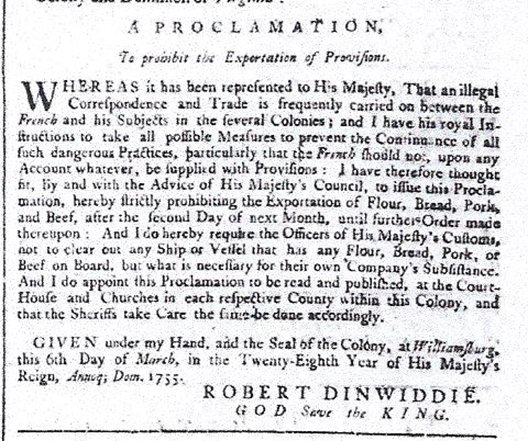
A
Proclamation
to
prohibit the exportations of provisions
Whereas
it has been
represented to His Majesty, that an illegal Correspondence and trade is
frequently carried on between the French and his Subjects in the
several
Colonies; and I
have his royal
Instructions to take all possible Measures to prevent the Continuance
of all
such dangerous Practices, particularly that the French should not, upon
any
Account whatever, be supplied with Provisions:
I have therefore thought fit, by and with the Advice of
His Majesty’s
Council, to issue this Proclamation, hereby strictly prohibiting the
Exportation of Flour, Bread, Pork, and Beef after the second Day of
next Month,
until further Order made thereupon:
and
I do herby require the Officers of His Majesty’s Customs, not to clear
out any
Ship or Vessel that has any Flour, Bread, Pork, or Beef on Board, but
what is
necessary for their own Company’s Subsistence.
And I do appoint his Proclamation to be read and published
at the
Courthouse and Churches in each respective County within this Colony,
and that
the Sheriffs take Care the same be done accordingly.
Given
under my Hand, and the Seal of the Colony,
at Williamsburg, this 6th day of March in the
Twenty-Eighth Year of
His Majesty’s Reign, 1755
God Save the King

Record for
patriotic service by James Ware Sr.
Even with the
Revolutionary War behind them, the way in which these new ‘Americans’
viewed
themselves was largely dictated by their home colony. Nowhere was this
distinction
more profound than in Virginia. Prior
to the conflict with Great Britain, Virginia had always served as
a focal point for this burgeoning nation - - occupying more land than
most all
other colonies put together. Once
her
lands were ceded over to the new American government after the
Revolutionary
War, Virginia
then became “the ‘mother” of the states
of Kentucky (1792), Ohio (1803), Indiana (1816), Illinois (1818), West
Virginia
(1863), and indirectly Michigan (1848), and even part of Minnesota
(1858).”
(Ref.
972) To be a ‘Virginian’ was a
great source of
pride, for even as John Adams had declared,
“this Declaration of Independence cannot pass without Virginia on
board.”
The 13 Original Colonies
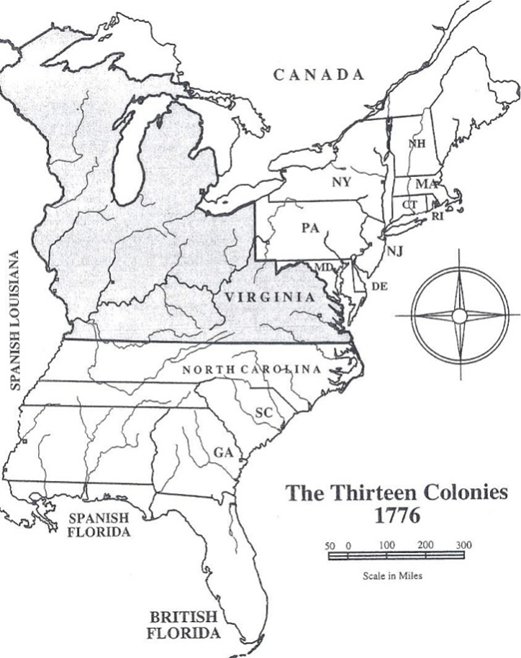
The 13 colonies
in 1783
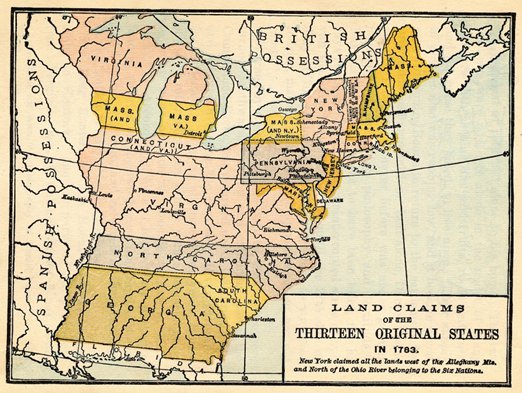
The
winds of change that had ushered in the
violent storm of revolution affected more than just the sense of
patriotism in
the colonists. Virginia,
herself, was
feeling growing pains. The
once rich
soil that had yielded great profit for its earliest settlers was now
growing
depleted from overuse. Tobacco,
a cash crop for so many,
ruined the
soil. After three years of harvesting the plant on a section of land,
farmers
discovered the ground was leached of its nutrients. Thus, new fields were
needed to make a living. When
increased
production of tobacco sent prices down, planters had to sell even more
of their
crop to keep up their income and this, in turn, created the need for
yet more
land and larger estates. It
was a never
ending cycle. Good
land was literally
‘running out’ – the sad result of high demand and poor use.
If the exhausted soil was not enough
of an issue, the climate certainly
did not help either. “In
the eight years from 1792 to 1800, there were only two years in
which crops were harvested and sold without the occurrence of some
calamity.” (Ref.
2265) Many
considered the winter season of
1779-1780 as “the coldest winter that
America [had] ever known.” (Ref.
2570) The
year 1781 was greeted with
high hopes, but “a drought caused many .
. . to seek economic improvement beyond the mountains.” (Ref.
2570) Descriptions
of this fertile land
called “Kentucke” must have truly sounded enticing. And so it came to be
that the ‘Virginian’ James Ware became a ‘Kentuckian’ in his remaining
years.
The
world changed greatly from 1714 to 1796, and so did the
man!
By
1792, James Sr., William,
Edmund,
and their immediate families had
relocated to Woodford County, Kentucky and were now well established in
their
new homes. Oldest
son, John,
who would always remain in Virginia, had three of his children married
and was
already a grandparent. Nicholas,
after
moving with his family to South Carolina in 1783, had been deceased for
five
years. We have no
firm record for Clary,
but it had been nearly 30 years since the passing of Richard.
One year earlier,
in 1791, James
Ware II had finally made the great migration
from Virginia to
Kentucky with his children and the Webb family. Unlike his father and
brothers, however, James Jr.
chose to travel the first part of the way by the Ohio River rather than
using
the Wilderness Trail. (Ref.
2543) The
remainder of the “long and dangerous trip was
made in wagons
and by horse back with all their negroes and what possessions that
could be
carried.” (Ref.
2) For
the complete biography of James Ware Jr., please read Virginia
Roots in Kentucky Soil, the sequel to this book.
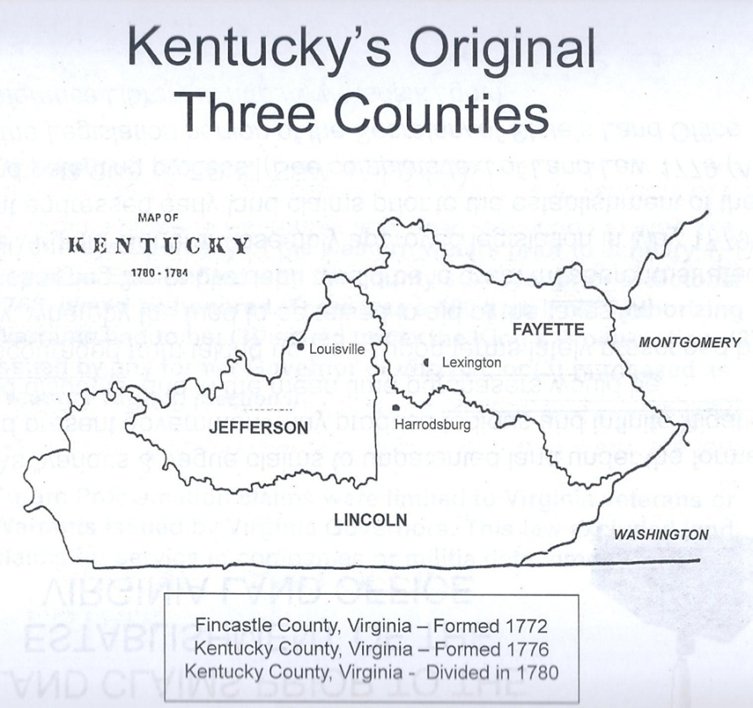
(Ref. 2536)
Map
showing
the original counties of Kentucky before 1784
The
above map shows
Lincoln County, where James Sr. and
his sons, William
and Edmund,
first settled.
The map below
shows how the counties had altered in just ten years time.
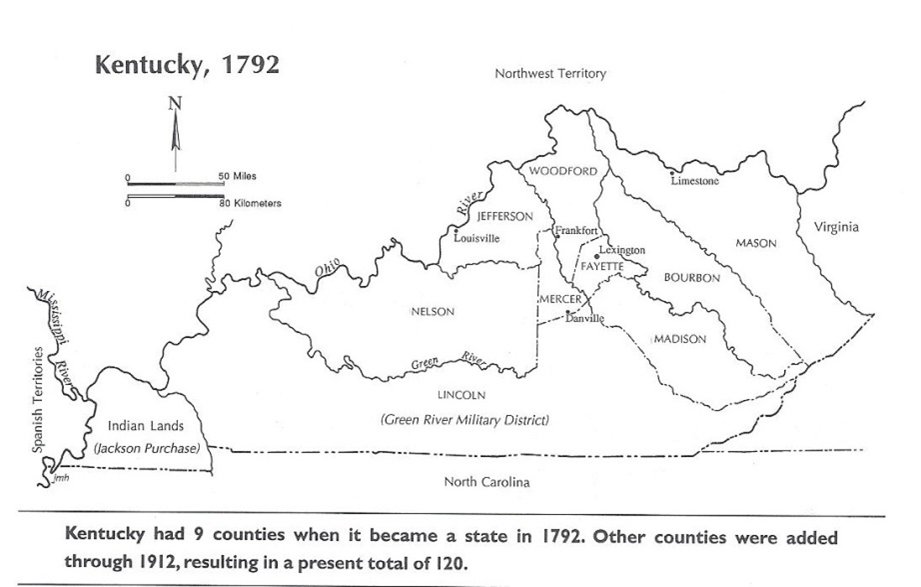
Once James and his sons, William and
Edmund, left Lincoln County, “they
settled in what was then Fayette County, but that section became a part
of
Woodford when the county was established in 1788.
However, when they surveyed the line that
separated the county of Franklin from Woodford, eight or ten years
later, the
line passed through the farm of James Ware, and within a short distance
of his
log residence, and separated his farm into two almost equal parts, one
in
Franklin and the other in Woodford, but the residence went into Franklin.”(Ref.
1024)
The following pictures, taken with the
kind permission of Mrs. Crit Blackburn Luallen (one of the current
owners of
Wareland) show the lush beauty of some Kentucky roads and one (in
particular)
that currently marks a boundary to her property.
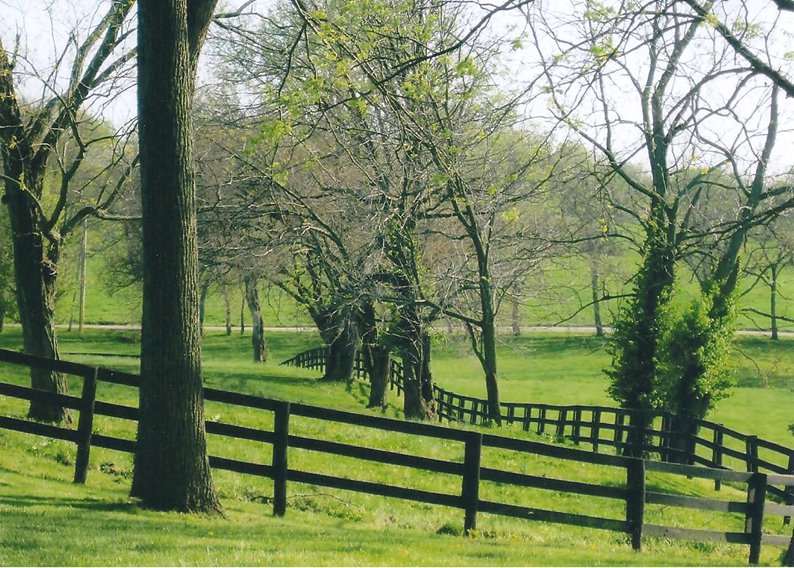
The
road in the distance (Old
Frankfort Pike) shows one of the boundaries of the remaining property
that was
known as Wareland.
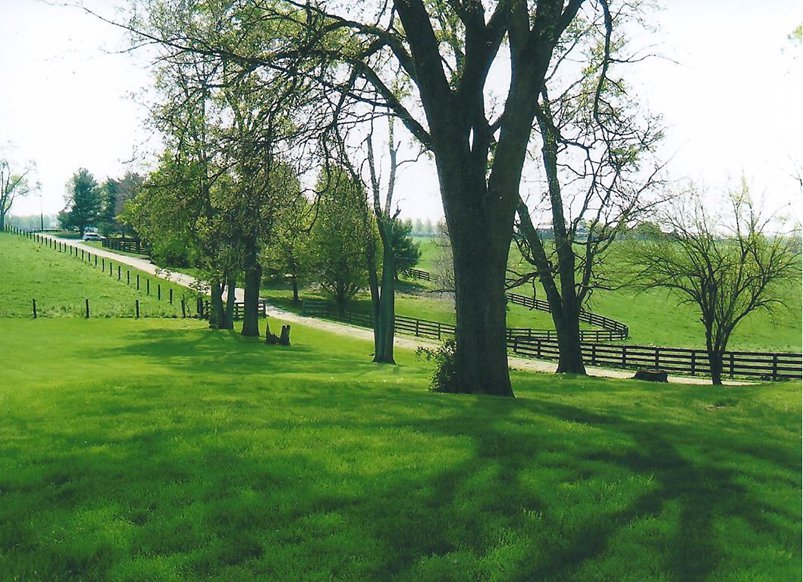
Another scenic Kentucky road - pictures taken by James and Judy Ware 2012
- Author William E. Railey noted the following information about the land of James Ware in the 1920s:
- “His residence, which in recent years has been modernized and enlarged, sets back in an avenue some distance from (but in full view of) the Frankfort and Versailles Road, at the intersection of the Duckers Station Pike. It is five and ½ miles from Frankfort and the farm originally extended to Duckers Station, and included a part of the farm that was afterwards owned by Capt. Elijah Fogg, husband of Ann R. Ware who was the great granddaughter of James and Agnes Ware; her grandfather being William Ware & her father being Samuel Ware, and all of the farm that was later owned by Robert Scott and now owned by the Mason heirs.” (Ref. 1024)
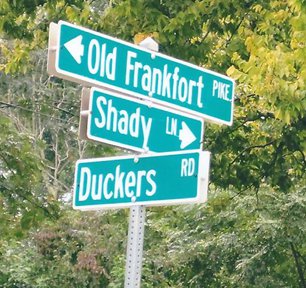
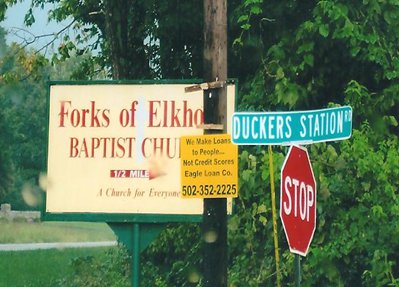
Road signs
The
map below shows highlights for the
following places which pertain specifically to James Ware:
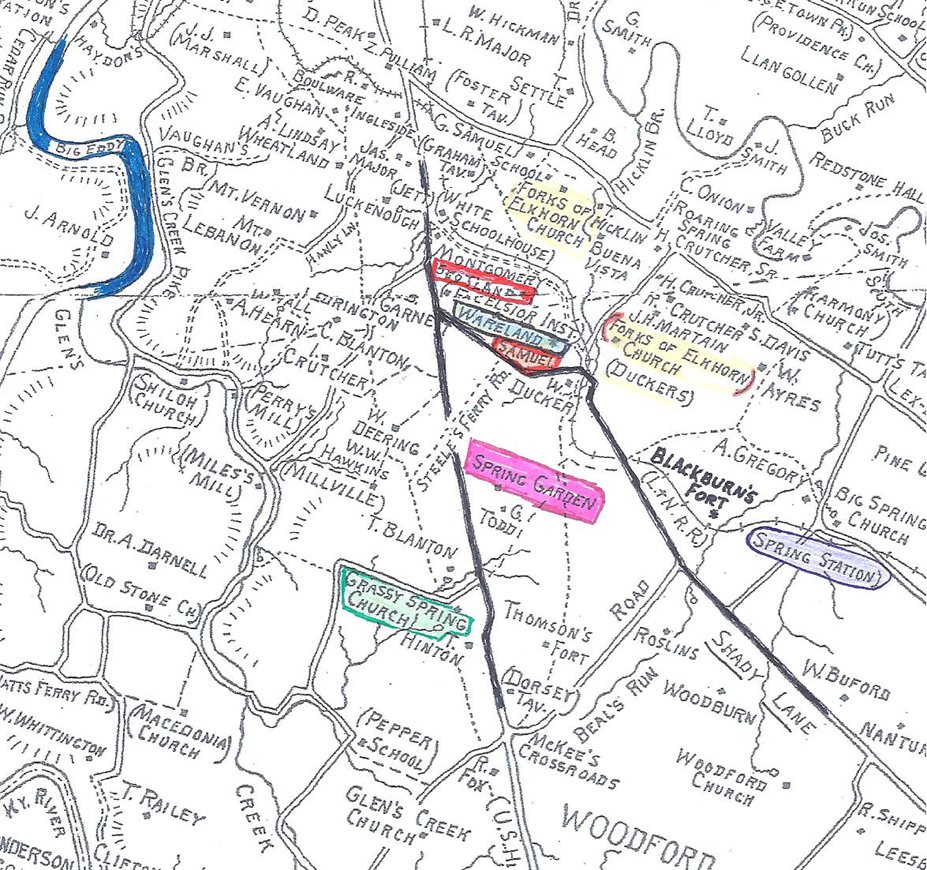
Home
of James Ware I and properties relating to his family
Photos courtesy of James & Judy Ware 2009
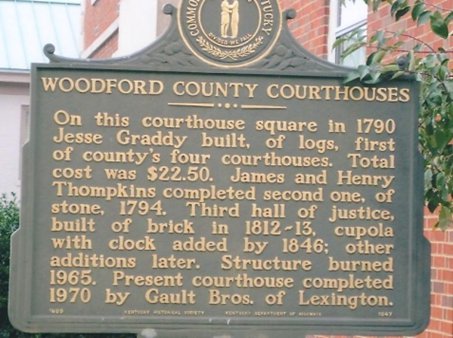
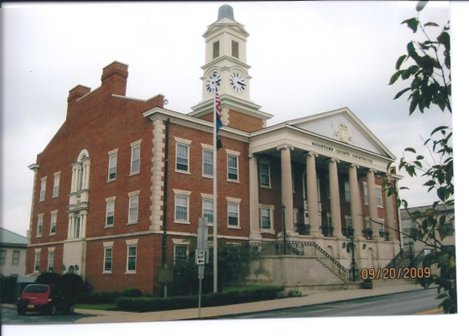
Woodford County Courthouse
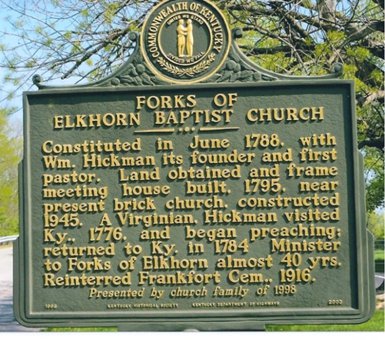
Marker
In 1790, for some reason, James
decided
to write his Last Will and Testament.
He
used his old friend, Reverend William Hickman, as a witness for this
important
document. Hickman
was the minister of
the Forks of Elkhorn Church where both Ware sons (and their families)
were not
only members of the congregation, but held positions of leadership.
Franklin County had seen
several cases
of smallpox that year, and influenza was an ever present danger, but
his
decision could also have
simply been for
administrative purposes. It
is
interesting to note, however, that there is no mention of Agnes
in the
will. Even in an
age where wives had few
legal rights, it is hard to believe that (after more than 40 years of
marriage)
he would not have included her in some way.
He was very meticulous in bequeathing something to even
the children of
his late son, Nicholas, who did not reside in Kentucky.
It would, therefore, seem safe to assume that
Agnes must have already died. Her
death
conceivably may have even provided him with the impetus to ‘put his
affairs in
order.’ It is also
possible that Agnes
passed away on the trip coming to Kentucky or when they were first
living in
Lincoln County. However
and whenever she
died, it must have been hard for James to lose his life partner after
so many
years together. Their
marriage had
spanned well over four decades - quite a remarkable achievement.
From
the History of the Forks of Elkhorn Church


Will
William
and Edmund
continued farming on what had been James’ land and held intact the
original
property claim for almost 15 years following his death.
In 1814, however, Edmund
Ware died and, with his
passing, a large portion of what was originally owned by James Sr. moved
out of the immediate Ware family. (See
Chapter 9 for more details)
Edmund’s
land went up for auction, and his
brother (William)
was obviously not in a position to buy it.
Edmund’s son-in-law, Rueben Samuel, stayed on the property
until it sold
to Martin Hardin three years later.
According
to church historian, Ermina Jett Darnell, “. . . in
1818, William and Sarah Ware and Reuben and Nancy Letcher Samuel,
sold to Martin D. Hardin the land on which Edmund
resided at the time
of his death, and upon which Rueben Samuel was living at the time the
deed was
made. (Ref.
2291)
Martin Hardin, appointed Kentucky
Secretary
of State under Governor Shelby during the War of 1812, “served
in this position until 1816 when he was elected to the U.S.
Senate.” (Ref.2577) He was married
to Elizabeth Logan, and “they lived with
their children [on the
land] which they bought in 1818 from the
Samuels and the
Wares.”
(Ref. 2291, 2533)
Hardin built a
home on his property and named
his estate Locust
Hill. When
Hardin died on
October 8, 1823, he was first buried “in
a handsome tomb at the back of the orchard on his property,”
but “his remains were later
re-interred in the State Cemetery in Frankfort.”
(Ref.
Wikipedia) His will contained
specific instructions
concerning his property.

Portions
of the will of Martin D. Hardin were kindly provided by Marti Martin,
Woodford County Historical Society Board
Member and Researcher. For
more details,
please see Chapter 9.
Scott decided to keep the name Hardin
had
used for the property when he “purchased
the first 205 acres . . . in 1834,” but he immediately began
to improve his
acquisition and set it on a course for becoming an estate that would be
renowned in all of Kentucky. The
new
owner continued
to buy additional acreage over the years,
and the surrounding gardens and orchards he incorporated into his
plantation
were breathtaking. “Many
illustrious guests were entertained . . .
for months at a time and
his imposing mansion was clearly visible “atop
one of the steepest points” of the (eventually more than)
1,000-acre estate. (Ref.
2578)
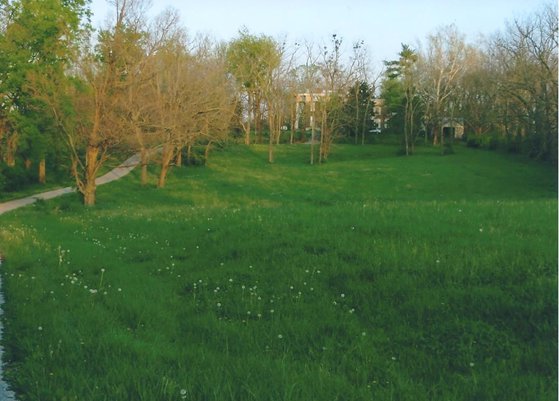
Home
of Robert
W. Scott, build on what was Edmund
Ware’s land in
1800
photo
taken by Judy C. Ware 2012
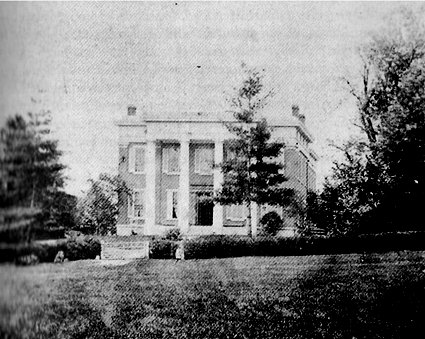
Scotland
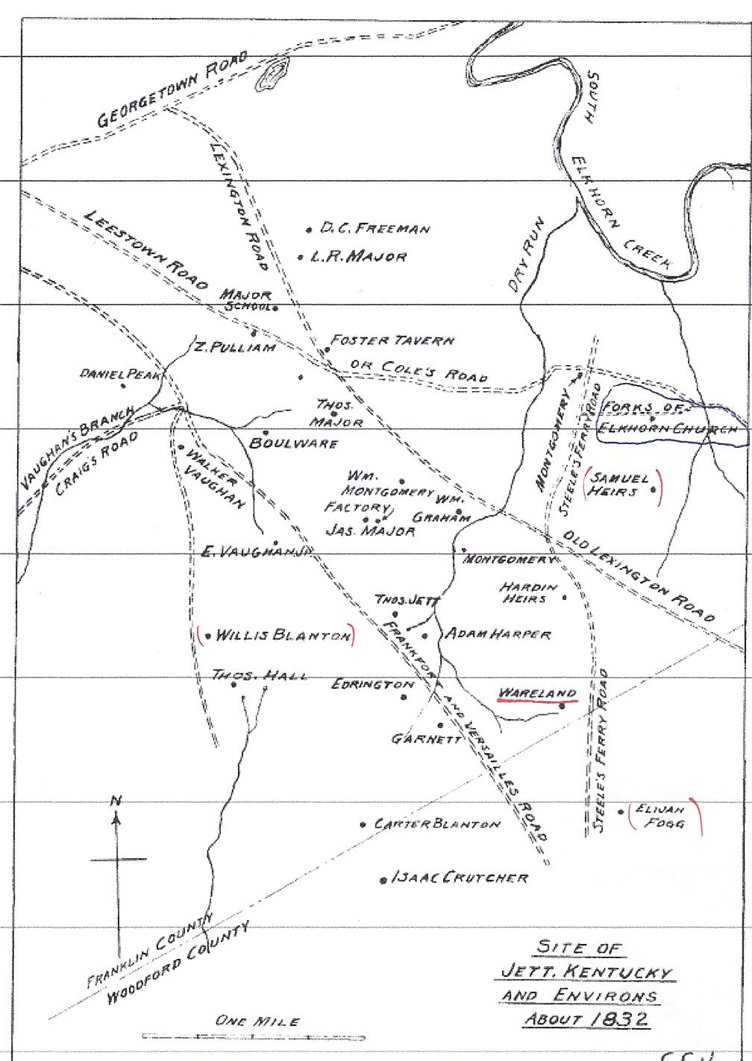
Scott’s beautiful house actually took
several years to complete. Construction
began in 1845, but it would not be finished until 1847.
(Ref.
Handbill) It
was during those years when the
opportunity arose for Scott to buy the single largest portion of
adjoining
land.
In 1829, William
Ware and his wife had both passed away - leaving
the property once
owned by James (and now known as Wareland)
to William’s son, Samuel
Ware, who “had lived on a part of his
father’s estate” all his life.
(Ref.
1024) Samuel
died in 1846, and
according to his will, Wareland
was then put into a trust for his
three sons - James, Hankerson, and William.
The heirs began selling off portions of Wareland
right after their
father’s death. By
1847, George
Blackburn had purchased 24 acres, and 46 acres went to Elijah Fogg and
his
wife, Ann R. Ware Fogg. Ann
was the
great granddaughter of James and Agnes Todd Ware.
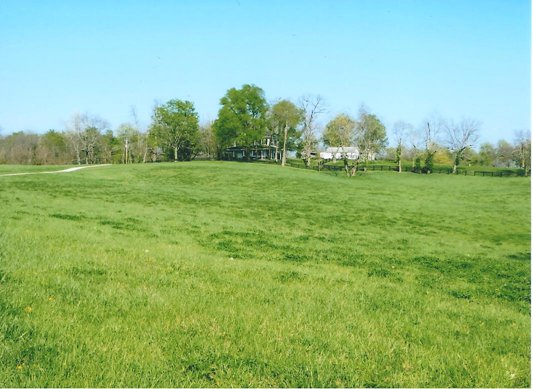
Home
of Crit Luallen
built on what was William Ware’s
land in 1846 and James Ware’s
land in 1783.
They also sold the remaining, largest
single portion of Wareland (150
acres) to Robert Wilmot Scott. By
combining this new acreage into his property of Locust Hill,
Scott ultimately reconnected
plots of land owned by
the two sons of James Ware - thus
making the area closely resemble
(once again) the original land warrant property owned by James Ware in
1783. Locust
Hill
(Edmund and
William’s
land) was now under one owner
again.
It is of interest to note that in this
transaction there was special
mention made of “excluding
a quarter acre of land which is reserved, including
graveyard.” Clearly,
the graves of William and numerous
other family
members were still being well maintained as of this date.
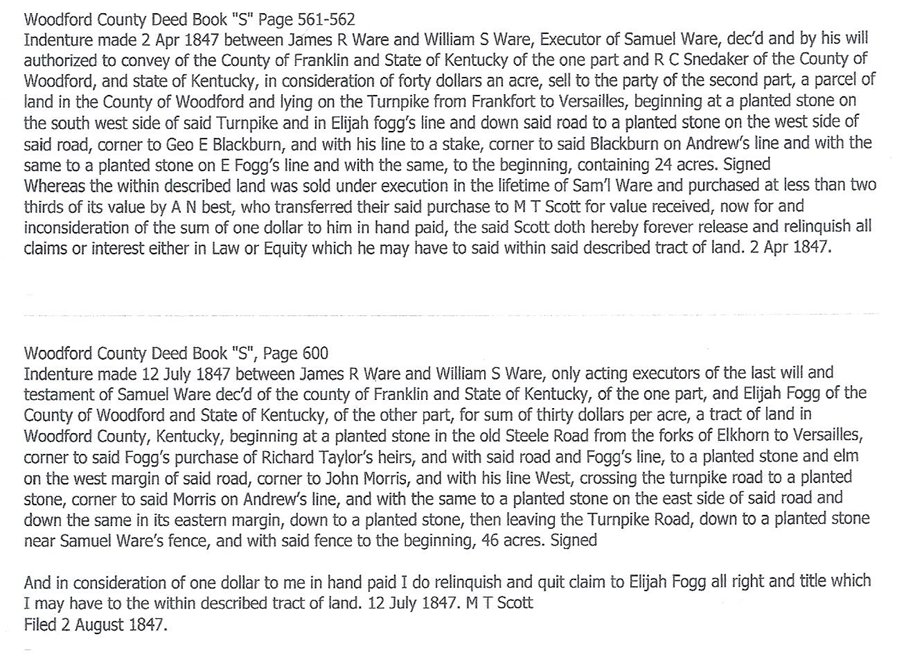 Deeds
for
Blackburn and Fogg for Wareland sections
Deeds
for
Blackburn and Fogg for Wareland sections
In
November of 1848, 94 additional acres were sold to Elijah Fogg.

Wareland
acres sold to Elijah Fogg

150
Acres Sold to Robert Wilmot Scott
Scott used both slave labor and wage
hands to manage the vast amount of
land on his farm. “Some of the wage hands occupied the tenant houses
and were supplied
rations from cribs and smokehouses.”
(Ref.
2292)
He built several
outbuildings, and “there existed at Locust
Hill
after 1849 living accommodations for fifty to one hundred persons.”
(Ref.
2292)
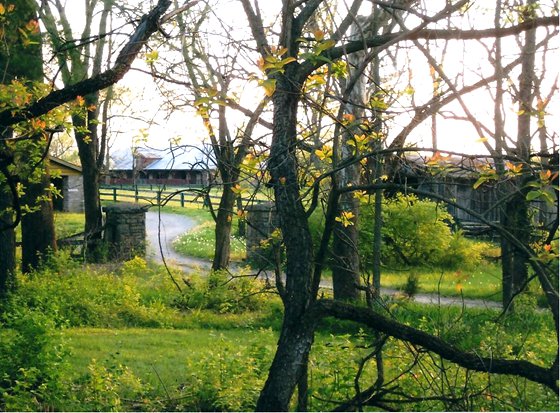
Outlying Buildings
We know that “after
William
Ware’s death, Wareland was
used as
a tenant house,” which would
make
sense because it was now simply part of the property Scott bought in
1849 to
enlarge his holdings. (Ref.
2219) A
tenant is
“one
that pays rent to use or occupy land, a building, or other property
owned by
another.”
(Ref.
Dictionary) It
is recorded that “in 1876, [Wareland]
was bought by Mr. and Mrs. Thomas H.
Bedford, who remodeled it and lived there for many years. It then became known as
the ‘Tom Bedford
Place.’ ”
(Ref.
2219) The
land was still owned by
Scott until after his death in 1884, so it is possible that Bedford was
one of
his tenant farmers who stayed with him for many years and managed this
section
of his land for him. By
remodeling the
house, it would be practical for locals to refer to it as “Tom
Bedford’s place”
even though it was still legally owned by Scott.
There is even an article in a Frankfort
newspaper of 1884 that mentions a friend who is “visiting
Mrs. T. H. Bedford at Wareland.”
(Ref.
Newspaper) It
was still officially being called Wareland
in 1884 - even though the Bedfords had
been living on it since 1876.

Frankfort
newspaper 1884
As of now, there has not been found
any record of a deed between the two
men, but it would still appear that, at some point, a section of Wareland
came under ownership of the Bedfords. According to one
family letter, “the Bedford home burned about
1907 and the
place was sold to Mr. Frank Haff who erected the house which is there
at
present.” (Ref.
2219) It is also possible,
however, that this
“Bedford Home” was not the same one as that which was located on
Wareland.
Robert W. Scott died in 1884 and was buried in Frankfort Cemetery. Horatio Pleasants Mason purchased Locust Hill from the Scott heirs, and it was he who renamed the estate Scotland in honor of Robert. (Ref. 2291, 2292) Horatio was married to “Samuella Bolling Anthony and they had nine children who lived to maturity and married.” (Ref. 2533) The Masons owned this land for less than twenty years, but under their care, Scotland remained a beautiful landmark. When Horatio died in 1906, it would seem the property then stayed with his son, Sam Mason, until it was sold to Jacob Swigert Taylor in 1923.

Swigert purchased Scotland
for his daughter, Mary
Belle Taylor Hay, and she and her husband (Charles Walter Hay) lovingly
made it
a home for not only their children but generations to come. The land was in good hands. While their daughter,
Eugenia, was away at
college, Charles wrote her a letter in which he mentioned a purchase he
had
recently made. He
was pleased to report
that he had bought a farm on 155 acres of beautiful Kentucky land which
was
located very close to her home of Scotland.
This new acquisition was part of an estate which had (at
one time) been
called . . . Wareland.
(See
Chapter 8) With that purchase by
Charles Hay, both
sections of the original 1783 Ware property were once again reunited
under one family and, even more astounding, those family members are
all descendants
of the original owner – James Ware I of Virginia.
James had no idea at the time of his
death the great legacy he
created. Each
generation from 1714 to
the present (2013) would see a male child carrying his name. The country that
he and his sons fought so hard to secure would be split apart in the
time of
his great grandchildren, only to be healed again - even stronger. Although his
generation helped birth a new
nation, his heirs lived to see that nation become a world power. Yet, through all the
changes - - - the ebb
and flow of life - - - the land which he would call “home” still
remains.
JCW
2013
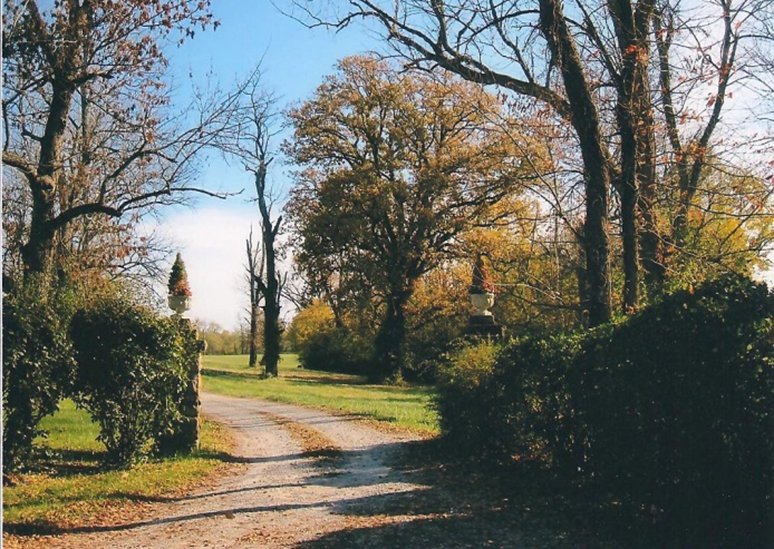
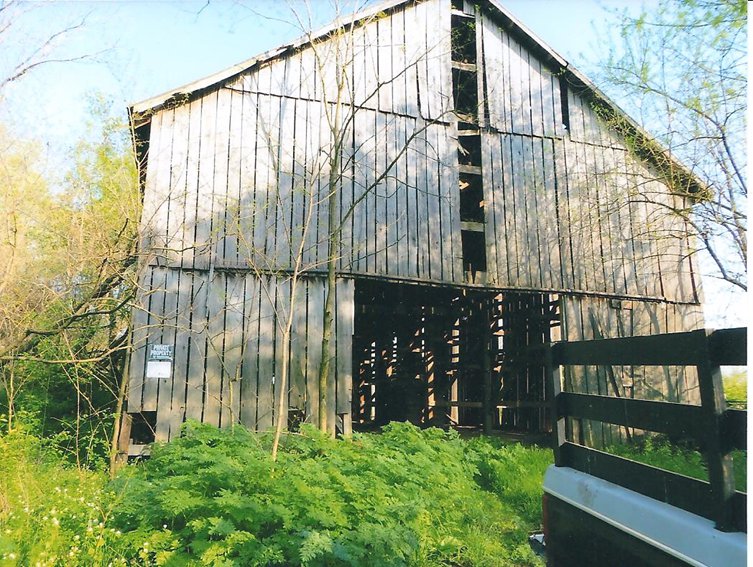
Old barn on land that was
known as Wareland
Photo
kindly provided by Crit
Blackburn Luallen
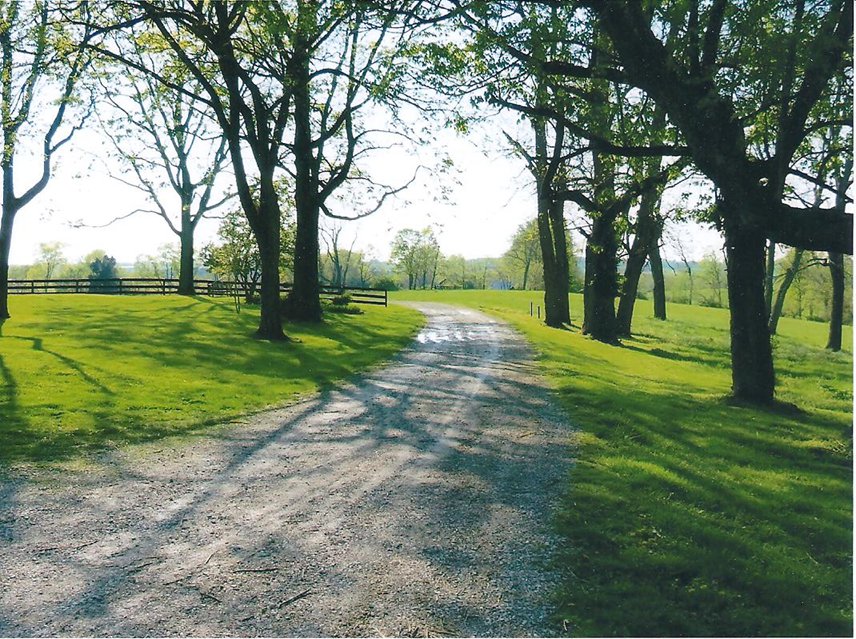
Wareland
Road
Across
Time
Twilight
filters
through the leaves
to
dance upon the
rain-washed land,
and
shadows play
among the trees
to
come and greet
me where I stand.
I
know this road –
and how it winds,
my
shoes have
touched each rock and stone –
and
yet, there are
those sacred times
I sense I do not walk alone.
Across
a thousand
yesterdays -
with
time suspended
in the air,
I’m
reminded that
where ere’ I go,
Those
born before
me traveled there.
Judy C. Ware © 2013
|